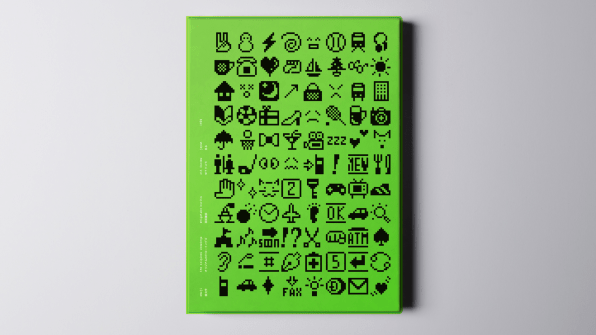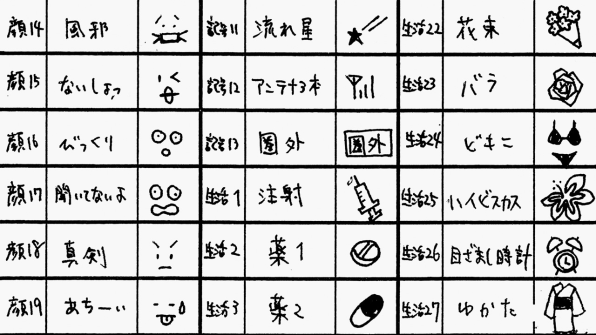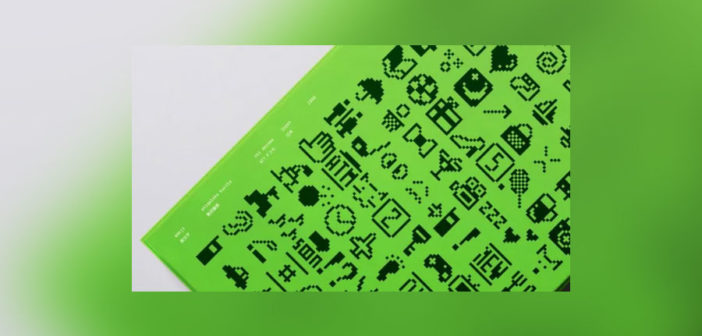Emoji, a new book from Standards Manual, celebrates the ancestral design of what has become the world’s most universal language.
It all started with a <3.
In the late 1990s, the Japanese telecom giant NTT DoCoMo offered an early mobile service called i-mode that let users send small amounts of data over their pagers, including a heart icon at the end of messages. Users <3’d the <3. But for reasons that have been lost to history, DoCoMo pulled it from the service.
People were furious. They demanded DoCoMo bring it back. In 1999, the company released a new heart icon alongside 175 other icons that became the world’s first emoji.
 These 176 emoji are the subject of a forthcoming book and an accompanying keyboard app from Standards Manual, the boutique publisher best known for turning the graphic design style guides of NASA, the EPA, and the New York City subway into covetable books. Emoji is Standards Manual’s first foray into digital media, and it celebrates the ancestral design of what has become the world’s most universal visual language. Today, users can select from more than 2,500 emoji to express ideas and feelings that transcend cultures. Many even prefer emoji to their native tongue.
These 176 emoji are the subject of a forthcoming book and an accompanying keyboard app from Standards Manual, the boutique publisher best known for turning the graphic design style guides of NASA, the EPA, and the New York City subway into covetable books. Emoji is Standards Manual’s first foray into digital media, and it celebrates the ancestral design of what has become the world’s most universal visual language. Today, users can select from more than 2,500 emoji to express ideas and feelings that transcend cultures. Many even prefer emoji to their native tongue.

A HAPPY ACCIDENT
Emoji’s emergence as a global language was hardly calculated. Backlash over the heart icon suggested to DoCoMo that users needed an efficient way to communicate information and emotions. So the company tasked a 25-year-old employee named Shigetaka Kurita with sketching icons people might find useful as shorthand, from a martini glass to a smiley face to a fax machine (hey, it was the ’90s). Kurita had some skills in digital art, and took inspiration from manga and kanji for his drawings, but he was not a designer. In fact, he only spent about four to six weeks on the icons. You can see some of Kurita’s early sketches below. They weren’t sophisticated.

He was also grappling with technical constraints. Each emoji had to fit on a 12-pixel-by-12-pixel grid in i-mode’s interface, which meant that many icons had to be slightly off-center. For instance, the umbrella icon is justified to the right, because there’s no central row of pixels on which to place the handle. You need an odd number of pixels to perfectly center an image.
A GLOBAL RECEPTION
For all their crudeness, the early emoji were remarkably popular. DoCoMo released them on its network in 1999, then to other carriers in Japan, and before long everyone in the country was chatting with hearts and smiley faces. Twelve years on, Apple and Google adopted the Unicode Standard version 6.0, which brought 722 emoji characters to the fingertips of iPhone and Android users everywhere. “[DoCoMo] threw this project together,” Standards Manual’s Hamish Smyth says. “Nineteen years later–an eon in technology–we’re doing a book about it. It’s used by billions of people; it’s had a huge impact.”
EMOJI TODAY
The slapdash origin story is all the more striking when you consider how tightly controlled emoji are now. An exclusive group of 12 organizations, including Apple, Google, Facebook, and Microsoft, pay $18,000 a year for the right to vote on which images get included in the official lexicon. The approval process is so opaque, a nonprofit organization has sprung up to help everyday people navigate the system.
At the same time, emoji have become cultural flashpoints. In 2016, Apple controversially replaced its pistol emoji with a water gun, a move seen as a solipsistic response to increasing gun violence in the U.S. Today, Microsoft is fielding criticism for being the last major company to not replace its pistol. The original 176 icons did not include a gun, toy, or otherwise. But it’s a testament to Kurita’s designs that we are now fluent enough in the language of images to fight over it.

Support Emoji on Kickstarter. Backers get a copy of the book and a free download of the app, which lets you type with the original emoji.
–
This article first appeared in www.fastcodesign.com
Seeking to build and grow your brand using the force of consumer insight, strategic foresight, creative disruption and technology prowess? Talk to us at +9714 3867728 or mail: info@groupisd.com or visit www.groupisd.com


![[Image: courtesy Standards Manual]](https://images.fastcompany.net/image/upload/w_562)